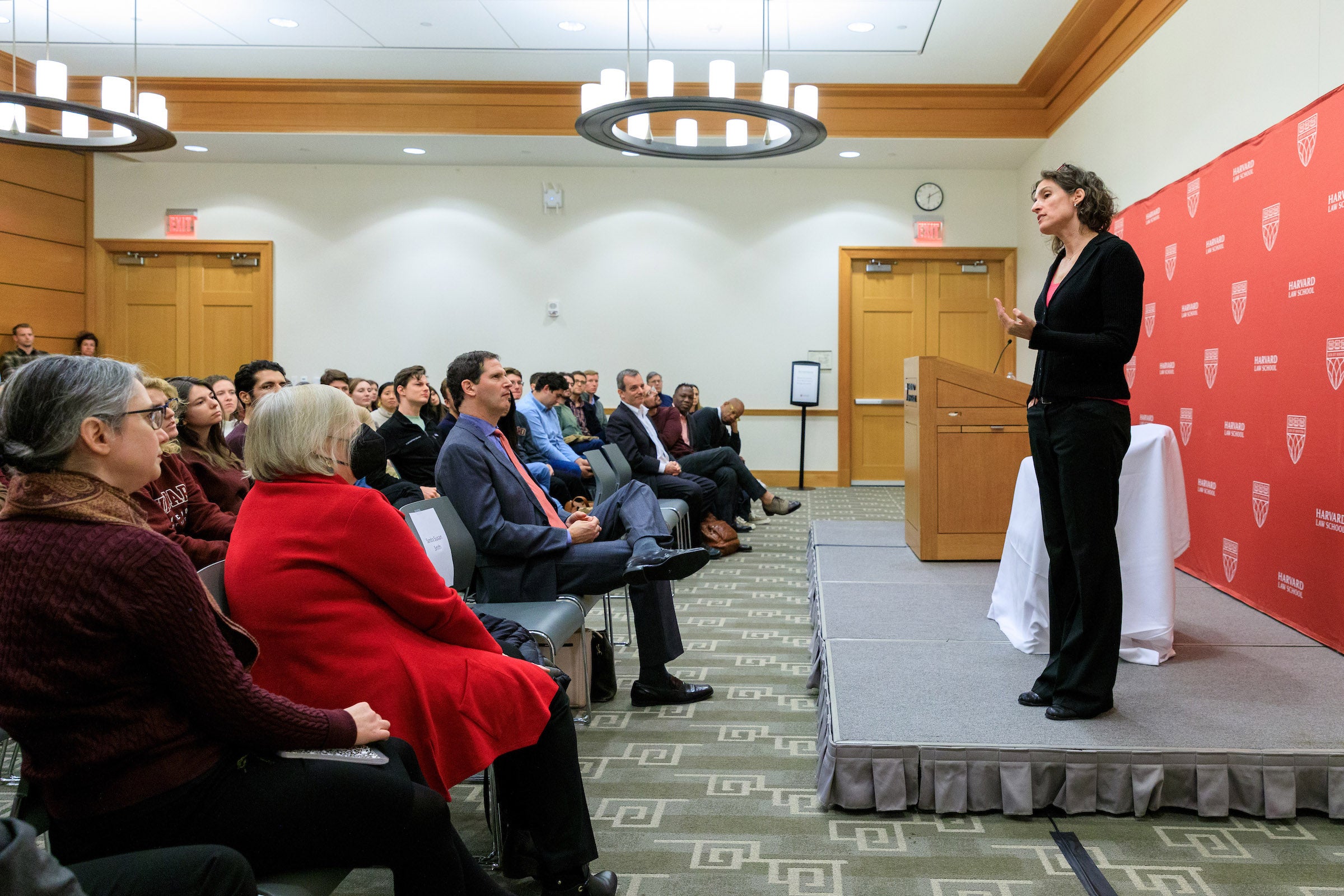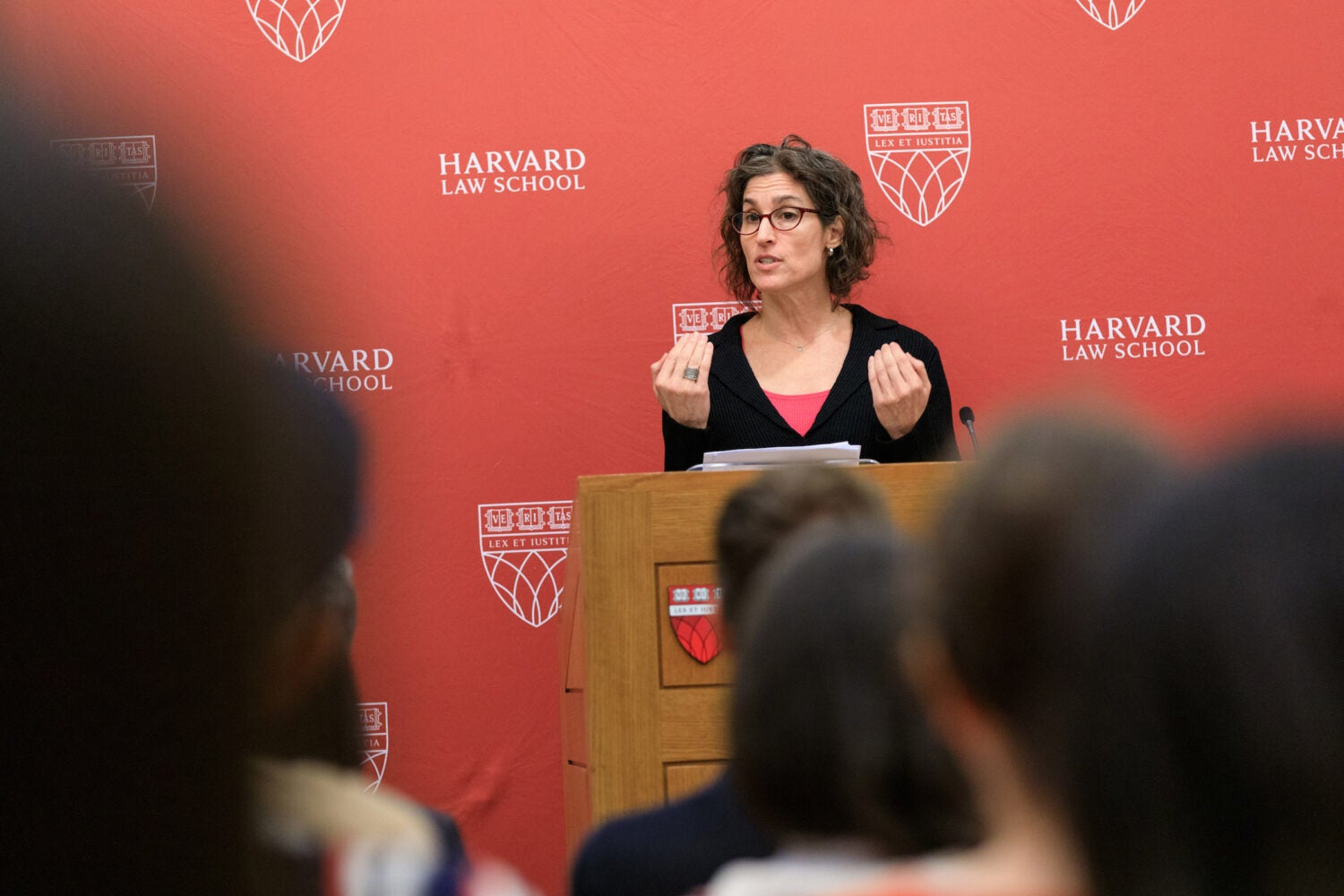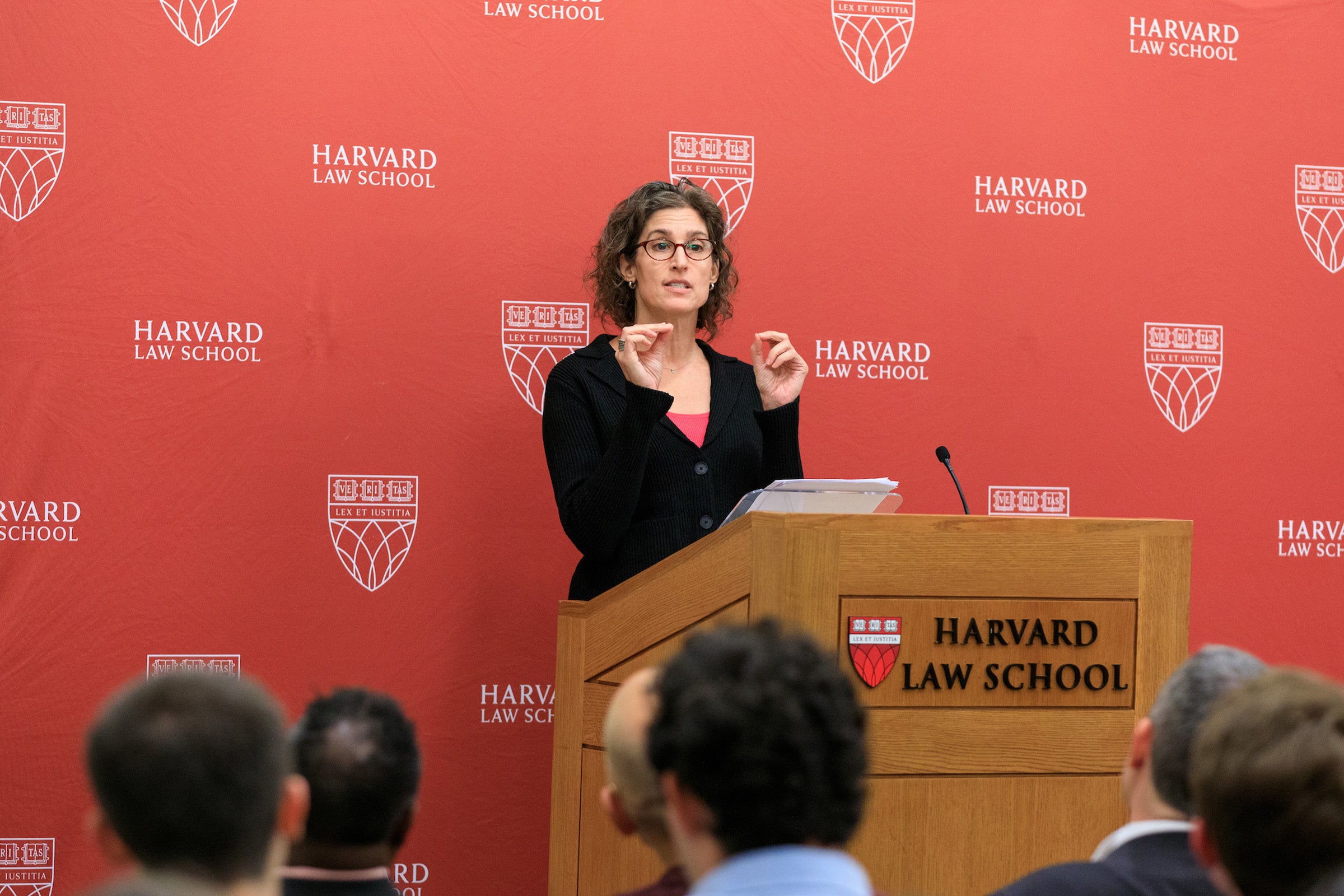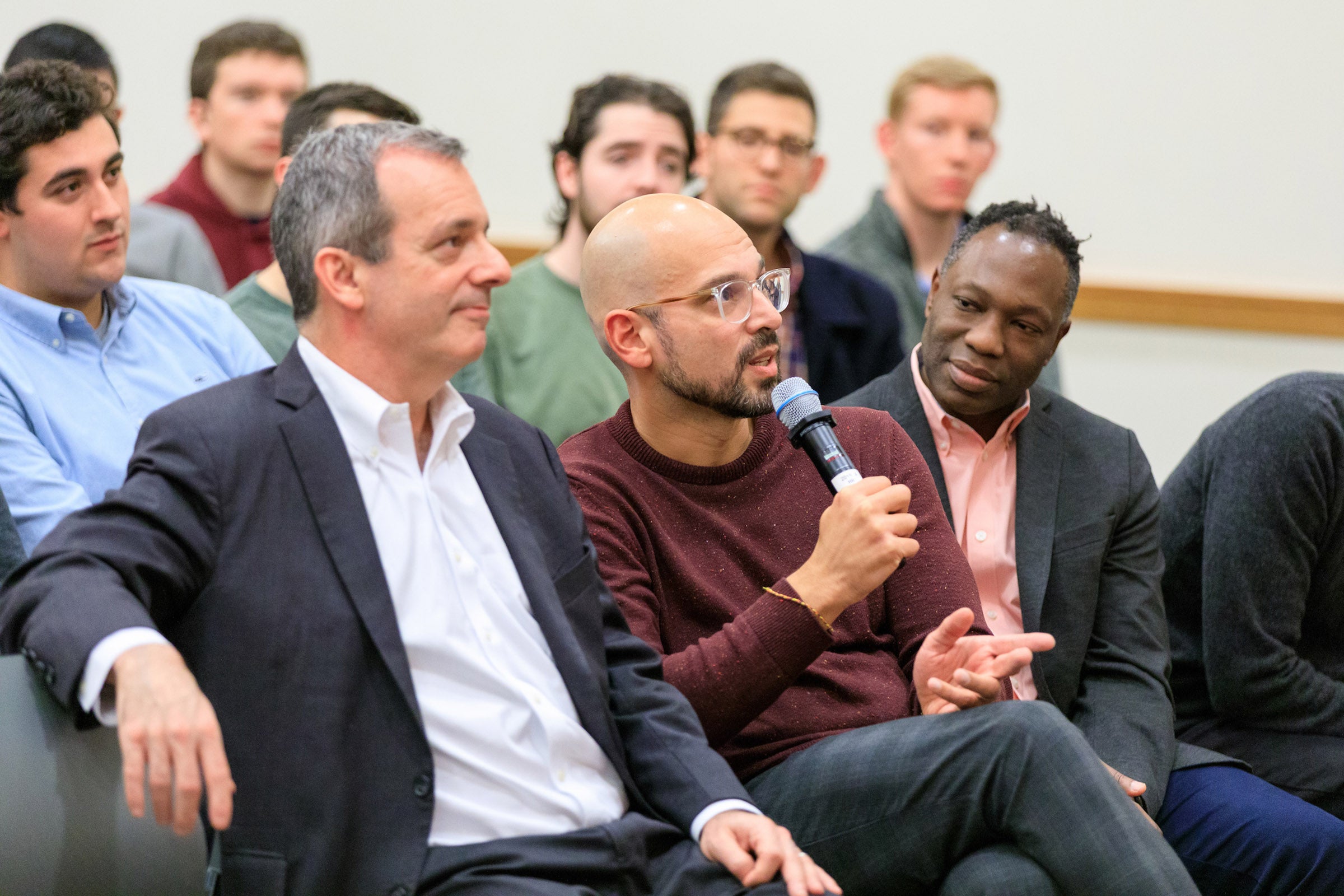In 2016, after a two-year investigation, the U.S. Department of Justice found that Baltimore Police Department officers regularly “arrest individuals standing lawfully on public sidewalks for ‘loitering,’ ‘trespassing,’ or other misdemeanor offenses without providing adequate notice that the individuals were engaged in unlawful activity.” Instead, the report explained that officers demanded that individuals “’justify their presence” to avoid being arrested for otherwise lawful activity.
Despite a subsequent consent decree designed to end these and many other unconstitutional policing practices, most of which primarily impact Black men, Harvard Law Professor Alexandra Natapoff said in a recent talk that such cavalier practices persist in Baltimore as well as in many other cities. “Hundreds of arrests still take place every year,” she said. “Arrestees are brought to the Baltimore City Detention Center, which is a violent and unhealthy place. If they can’t make bail, they routinely plead guilty in order to obtain release. These are wrongful convictions.”
For Natapoff, who once served as an assistant federal public defender in Baltimore, this is one of many egregious examples of how the criminal system works differently at what she called the bottom of the “penal pyramid” compared to the top. Her comments came during a lecture titled “Redistributing Law,” which she delivered on November 6 during a Harvard Law School event to celebrate her appointment as the Lee S. Kreindler Professor of Law.


Her talk’s title, she said, reflects her desire “to call attention to the ways in which law is a form of wealth, and how we can be intentional about distributing it in a more egalitarian way.” The talk offered a preview of her next book, which she hopes “will reveal new opportunities to analyze the bottom and to intervene in its harmful dynamics. By charting the structures of inequality, we can try to figure out how to redistribute resources, attention, and status in more egalitarian ways.”
The top of the criminal justice pyramid, she explained to a full house of faculty, students, and staff, “is the space of serious crimes, of federal offenses, well-resourced defendants and defense counsel, and relative transparency and accountability.” Here, the law and the legal system work more or less as they are designed to, with search warrants, probable cause, adversarial testing, and decisions based on evidence and law.
“To be clear, this does not mean that the law at the top is just,” Natapoff said. “Law can work exactly the way it’s supposed to, and still be unjust and oppressive.” But unlike those at the bottom of the pyramid, people at the top “have status, resources, and the wherewithal to engage and challenge legal institutions and make their voices heard.” It is, she said, “essentially the gold standard.”
But according to Natapoff, who has authored books on the underregulated world of criminal informants, and on the enormous and sloppy American misdemeanor process, the criminal system doesn’t work like that for most defendants. “[A]t the bottom of the penal pyramid, sometimes law doesn’t have much traction at all. This is the space of low-level courts, misdemeanors and low status felonies, crimes of poverty, bail schedules, and debtor’s prison. Punishment tends to take the form not of prison, but of fines and probation. Incarceration is sprinkled casually throughout like salt. Dockets are crowded, data is scarce, defendants are vulnerable.”
The bottom is a very different legal culture than the top, she says. Sometimes, the “substantive and procedural rules are just looser,” with less access to legal counsel, jury trials, or even on-the-record proceedings. “[J]udges and lower courts can be infamous for running what is sometimes referred to as a ‘plea mill,’ or what the Supreme Court has referred to as ‘assembly line justice,’” she said.
To emphasize her point, Natapoff recounted an eye-opening statement made by the chief justice of the South Carolina Supreme Court in 2007. When asked why state courts weren’t providing defendants with legal representation despite a 2002 U.S. Supreme Court ruling in Alabama v. Shelton declaring that they are entitled to counsel under the Sixth Amendment, Chief Justice Jean Hoefer Toal said, “Alabama v. Shelton is one of the more misguided decisions of the United States Supreme Court, I must say. … So, I will tell you straight up, we are not adhering to Alabama v. Shelton in every situation.”
“In other words,” Natapoff continued, “the highest judicial official in the state announced in public that the courts of South Carolina would continue to violate Supreme Court precedent and the Constitution. And you might say, ‘Oh, my goodness, what an admission, what happened, then?’ The answer is nothing. For years, nothing. Because this is the culture of the bottom.”
The differences between how law operates at the top and bottom of the pyramid, Natapoff argued, “represents a profound form of inequality. It therefore deserves our closest scrutiny.” But studying it, she said, is difficult: “by virtue of being low status, the bottom of the pyramid is also low visibility, which means that looking closely requires some sleuthing.”
One area she has recently scrutinized is prosecutorial misdemeanor declination decisions. After an arrest, prosecutors must decide whether to press or drop charges. This decision is made in millions of cases each year.
At the top of the pyramid and for serious cases, that decision is typically made with some care and it can take weeks or even months, said Natapoff. Prosecutors regularly screen police arrests and evidence in such instances, and routinely opt not to press charges, she said, noting that the “average national declination rate for felonies is around 25 or 30%.”
But at the bottom of the pyramid, the misdemeanor declination decision is often made with little to no deliberation and with undue deference to police. “These decisions are typically made on the fly, maybe in minutes, and they rely solely on police reports without checking the evidence,” said Natapoff. “Moreover, they’re often made by junior prosecutors who are in training in the misdemeanor docket. As a result, misdemeanor declination rates are low, sometimes 5% or less.” More than a third of these cases, however, will later be dismissed because the initial decision to prosecute was made uncritically.
“Prosecutor offices are skimping on basic processes that we rely on to protect the vulnerable and to maintain the integrity of the criminal system,” Natapoff said. “The implications of these kinds of practices at the bottom reach far beyond the criminal process because the criminal process itself does not operate in isolation or in a vacuum.”
“Being charged with a low-level crime is a normal part of American life, about as common as going to the doctor when you get the flu or buying a truck or SUV or attending a four-year college.”
One third of Americans have a criminal record and 13 million criminal cases are filed every year, she explained. “[B]eing charged with a low-level crime is a normal part of American life, about as common as going to the doctor when you get the flu or buying a truck or SUV or attending a four-year college.”
For these Americans and their families and communities, the downstream effects of this “mass criminalization” are enormous. The criminal system impacts educational access, families, and immigration. It exacerbates residential racial segregation, and it interferes with the workings of the labor market.
“Many people in the misdemeanor system are already on the economic margins,” she said. “They are working and paying rent but they have no financial room for error. Indeed, most Americans report that they do not have easy access to $500 in the case of an emergency. And then they get a criminal fine, or a ticket they can’t pay, which leads to a suspended license, which means they lose their job, and it ruins their credit, which means they can’t get apartments or loans. It may disqualify them from public assistance, and even push them into homelessness.”
At the bottom of the pyramid, Natapoff argued, the effects on people and communities implicate many legal, social, and economic institutions.
“The criminal system should thus be treated as an engine of the redistribution of social capital in its own right,” Natapoff concluded. “And it should be held to account not only for its criminal outcomes, but for its redistributive decisions and impact.”
Want to stay up to date with Harvard Law Today? Sign up for our weekly newsletter.


